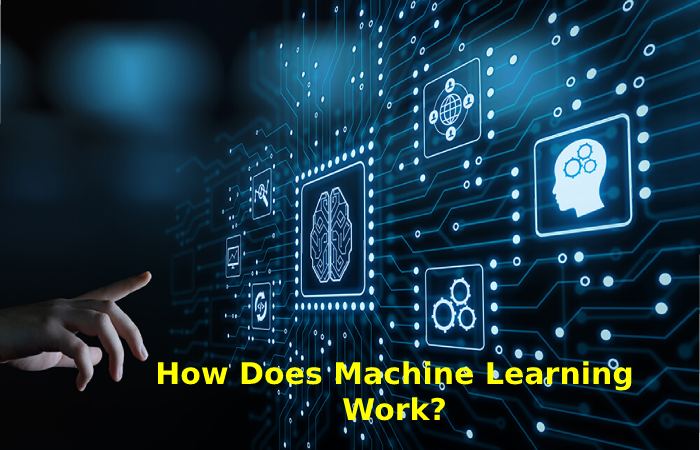Table of Contents
What is Machine Learning?
Machine learning is a subsection of artificial intelligence that refers to the process by which PCs develop pattern recognition, or the ability to continuously learn and make predictions based on data, after which they make adjustments without being specifically programmed. For it.
Whether or not you’re excited about the idea that artificial neural network may one day be sophisticated enough to replicate human consciousness, there are undeniable practical advantages to machine learning, notably:
Smart Big Data Management
Without the speed and complexity of machine learning. It would be impossible to process and extract insights from the enormous volume and variety of data generated as humans and other environmental forces interact with technology.
Smart Devices
From mobile devices that track health and wellness goals to self-driving vehicles and “smart cities” with infrastructure that can automatically reduce time and energy waste, the Internet of Things (IoT) is a great promise, and machine learning can help make sense of this significant increase in data.
Also Read: What is Cloud Computing? – Work, Types, and More
Enhanced Consumer Experience
Machine learning enables search engines, web applications. Other technologies to tailor results and recommendations to match user preferences, creating unique, personalized consumer experiences.
How does Machine Learning Work?

Machine learning is incredibly complex, and how it works varies depending on the task and the algorithm used to accomplish it. A machine learning model is a PC that analyzes data. Identifies patterns, and then uses those insights to complete the assigned task better. Any task based on data points or rules can be automated using machine learning. Even the most complex tasks like answering customer service calls and reviewing resumes.
Machine learning algorithms work with more or less human intervention/reinforcement, depending on the situation. The four main machine learning models are supervised, unsupervised, semi-supervised, and support.
With supervised learning, the PC has a labeled set of data that allows. It to learn how to do a human task. It is the least complex model, attempting to replicate human learning.
With unsupervised learning, the PC takes unlabeled data and extracts previously unknown information or patterns from it.
There are many different ways that machine learning algorithms do this, including:
- Clustering, where the PC finds similar data points within a data group and groups them accordingly (creating “clusters”).
- Density estimation, where the PC discovers insights by seeing how the dataset will distributed.
- Anomaly detection is where the PC identifies data points within a data set that are significantly different from the rest.
- Principal Component Analysis (PCA), where the PC analyzes a set of data and summarizes it so it can be use to make accurate predictions.
With semi-supervised learning, the PC has a set of partially labeled data and performs. Its task using the labeled data to understand the parameters and interpret the unlabeled data.
With reinforcement learning, the PC observes its environment and uses that data to identify the ideal behavior that will minimize risk or maximize reward. It is an iterative approach requiring some reinforcing signal to help the PC better determine the appropriate action.
How are Deep Learning and Machine Learning Linked?
Machine learning is the broadest category of algorithms capable of taking a set of data and using it to identify patterns, discover information, or make guesses. Deep learning is a particular division of it that profits the functionality of ML and pushes it beyond its capabilities.
In machine learning, there is some human involvement as engineers can examine an algorithm’s results and adjust based on accuracy. Deep understanding will not found in this exam. Instead, a deep learning algorithm uses its neural network to verify the accuracy of its results and then learns from them.
The neural network of a deep learning algorithm is a structure of overlapping algorithms to emulate the design of the human brain. Therefore, the neural network learns to improve over time without feedback from engineers.
How Maps Bring Machine Learning Benefits Across Enterprise Applications
It is an element that makes a company strong, flexible, and resilient. Innovative organizations choose ML to drive top-down growth, employee productivity, and customer satisfaction.
Many companies succeed with a few ML use cases, but that’s just the beginning of the process. Experimenting with it may come first. But embedding machine learning models into business processes and applications should follow soon after so that they can be scale across the enterprise.
Many organizations lack the capabilities, processes, and tools to achieve this level of business integration. To successfully achieve ML at scale, companies should consider investing in MLOps. Which includes the process, tools, and technology to optimize and standardize. Each stage of the ML lifecycle from model development to go live. The emerging field of MLOps tries to bring agility and speed to the ML lifecycle. It can also compared to what DevOps did for the software development lifecycle.
Conclusion
It is a field of inquiry devote to understanding and building methods that ‘learn,’ that is, methods that leverage data to improve performance on some tasks. It will seen as a part of artificial intelligence.
Also Read: What is Cyber Security? – Benefits and More
